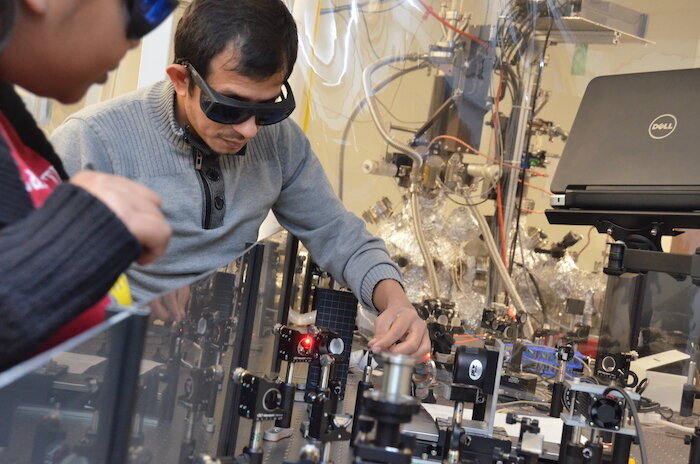A team of scientists at the University of Kansas has found combining organic semiconductor zinc phthalocyanine with a single layer of molybdenum disulfide atoms can greatly improve the material’s performance as a solar cell.
Using photoemission spectroscopy equipment the team was able to observe the behavior of electrons in the material. That led to several discoveries about the interface between the two materials which the researchers say could enable them to determine new directions for research into organic solar cells and two-dimensional semiconductors.
“One of the prevailing assumptions is free electrons can be generated from the interface as long as electrons can be transferred from one material to another in a relatively short period of time – less than one-trillionth of a second,” said Wai-Lun Chan, associate professor of physics and astronomy at the University of Kansas. “However, my graduate students and I have found the presence of the ultrafast electron transfer in itself is not sufficient to guarantee the generation of free electrons from the light absorption. That’s because the ‘holes’ can prevent the electrons from moving away from the interface. Whether the electron can be free from this binding force depends on the local energy landscape near the interface.”
Tracking electron journeys
Popular content
The experiments are described in the paper Effect of the Interfacial Energy Landscape on Photoinduced Charge Generation at the ZnPc/MoS2 Interface, published in the Journal of the American Chemical Society. The team used a laser pulse lasting 10-14 (ten quadrillionths) of a second to set electrons into motion and then a second pulse to kick electrons out of the sample.
That enabled the scientists to calculate the journey taken by the electrons after the first laser pulse and their position relative to the interface.
The researchers say that their findings will enable further research to develop principles for the design of hybrid organic PV cells. “These detailed measurements enabled us to reconstruct the trajectory of the electron and determine conditions that enable the effective generation of free electrons,” said Hui Zhao, professor of physics and astronomy at the University of Kansas and a co-author of the paper.
This content is protected by copyright and may not be reused. If you want to cooperate with us and would like to reuse some of our content, please contact: editors@pv-magazine.com.



By submitting this form you agree to pv magazine using your data for the purposes of publishing your comment.
Your personal data will only be disclosed or otherwise transmitted to third parties for the purposes of spam filtering or if this is necessary for technical maintenance of the website. Any other transfer to third parties will not take place unless this is justified on the basis of applicable data protection regulations or if pv magazine is legally obliged to do so.
You may revoke this consent at any time with effect for the future, in which case your personal data will be deleted immediately. Otherwise, your data will be deleted if pv magazine has processed your request or the purpose of data storage is fulfilled.
Further information on data privacy can be found in our Data Protection Policy.